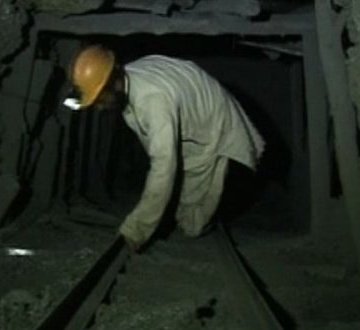- About
- Topics
- Picks
- Audio
- Story
- In-Depth
- Opinion
- News
- Donate
- Signup for our newsletterOur Editors' Best Picks.Send
Read, Debate: Engage.
In Pakistan’s most neglected yet largest province of Baluchistan, close to 100 coal-miners lost their lives in 2018 in what appears to be a vicious cycle of exploitation of the poor and criminal negligence from the authorities.
Five years ago, I visited one such mine in the deserted mountains not far away from the Pakistan Army garrison on the outskirts of Queeta city. The scenes in the area were heartbreaking. And, it seems nothing has changed.
Desperate and neglected miners from poor parts of the country have been working in these mines for decades, only to die one day in the most preventable of accidents, as there’s no proper ventilation inside the mine — 600 metres underground — while only a few workers are equipped with safety lights only. Miners have no oxygen masks and there are no first aid facilities in case of an emergency.
On one corner of the mines I visited outside Quetta, there was a make-shift graveyard reminding the unfortunate ones about their agonies and the final destination of their troubled-lives.
Last year alone, close to 100 miners lost their lives inside these deadly mines as the government seems to be turning a blind eye to the contracting and sub-contracting that compel the labourers to desperately seek to extract more and more — risking their lives under harsh conditions in return for minimum payment.
The worst accident inside the mines to date happened in 2011 when dozens of workers were trapped inside a mine. All of them died. That year alone, there were nearly 100 workers killed in 30 separate coal mine accidents.
There are around 250 coal mines across Baluchistan province, employing 60 thousand workers. Coal miners work 12 hours a day for an average of what equates to $5.
After the 2011 incidents, the government passed a bill to allocate funds to improve the working conditions in the coal mines, but hardly anything has changed.
Discussions around the safety of the miners remain out of public and private discourse, as the country is desperately seeking to embrace the multi-billion dollar China Pakistan Economic Corridor that is likely to make the exploitation of poor migrant workers the new normal.
The government and corporate circles in Pakistan also seem focused on tapping into the 175 billion tons of coal over 9,000 square kilometres in the neighbouring Thar district.
Countries like Pakistan need to look to Jordan, Peru and Brazil to learn a lesson or two on promoting forestation and avoiding getting its hands dirty with coal when there is huge potential for clean energy, better working conditions and a flourishing economy.
